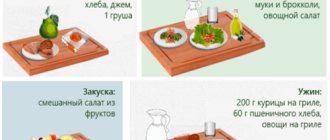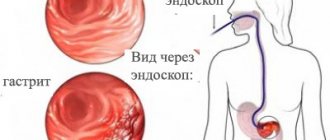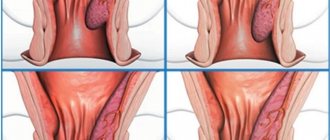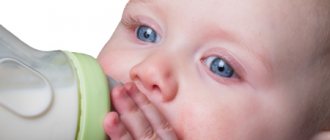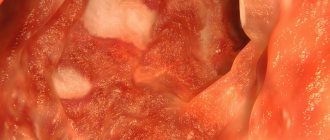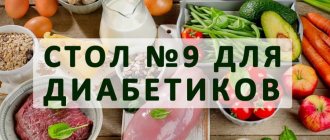pyelonephritis
Ultrasound tests
Pyelonephritis is an inflammatory process that occurs in the kidneys, affecting the pelvis and renal calyces. Like all types of inflammatory processes, pyelonephritis can have an acute stage with a rapid and sharp rise in temperature, aching pain in the lower back, and a chronic stage, in which the disease reminds itself from time to time. If you do not adhere to dietary recommendations, the disease from a sluggish current process returns to the stage of acute exacerbation.
Diet rules
Diet in cases of pyelonephritis in adults plays a vital role in treatment. Any non-compliance with the diet can lead to a worsening of the disease and an increase in the duration of drug therapy. Proper nutrition for pyelonephritis is usually selected with the aim of normalizing metabolic processes in the patient’s body, quickly removing toxic substances, nitrogenous compounds and salts. If the correct diet is prescribed and the patient follows it, a clinical effect will soon be noted.
The basic principles of dietary nutrition according to Pevzner, which is used in cases of therapeutic treatment of pyelonephritis, include the therapeutic “Table No. 7”. Its essence is to reduce daily salt intake to a minimum amount, reduce protein foods, and increase the proportion of vitamins consumed.
However, it is important to remember that a specialist must prescribe the diet in detail. For example, a complete refusal of salt can lead to salt-wasting kidney syndrome or renal failure, so the doctor draws up a menu where the maximum daily salt intake for the patient does not exceed 10 grams. However, with profuse, incessant vomiting, high fever and severe sweating, doctors increase the amount of salt for the patient to 15 grams.
A diet for renal pathologies for adults involves fortifying food. For patients with pyelonephritis, the amount of daily intake of vitamins A, group B and should be increased by one and a half times. The diet menu should include easily digestible foods that have undergone gentle heat treatment during preparation. With this diet, preference should be given to steam cooking with the addition of salt at the end of the cooking process. In addition to steamed food, you can eat boiled food; fried food is not recommended. Fatty foods are also not advisable for kidney disease. It is worth eating boiled food at least 5 times a day, however, if a high body temperature occurs, it is important to reschedule the main meal to the moment when the body’s thermoregulation is improving. That is, it is advisable to eat more at normal temperatures, and drink more at elevated temperatures.
The main goals of the diet for pyelonephritis are the following processes:
- creating optimal conditions for normalizing kidney function;
- resumption of the optimal metabolic process in all organs and systems of the body;
- lowering blood pressure;
- getting rid of fluid stagnation in the body and swelling;
- creating conditions for the complete removal of salts, toxins and nitrogenous compounds.
In cases of pyelonephritis in children, the diet for them is not fundamentally different from that described above. The child's nutritional characteristics may be his personal preference for certain foods. For example, if you do not want to drink a lot of water, it is important to offer your child to drink fruit drink, juice, or tea. The liquid should enter the sick body often, in small quantities. In the case of a child’s diet, it is advisable to provide his diet with 50% fermented milk products, eliminate cocoa and chocolate, salty foods (nuts, chips, crackers) and soda from the menu.
In the case of the occurrence of this disease in infants, it is important to take into account certain features when preparing their diet. The acute form of the disease must be accompanied by a water-tea diet, and breastfeeding must be strictly dosed. If an infant is bottle-fed, then in cases of pyelonephritis he should be fed fermented milk products. At the same time, it is necessary to strictly control the salt and protein content in products for feeding infants. To feed infants, it is necessary to choose products in which extractive substances will be completely absent.
Diet for pyelonephritis in children and pregnant women
The diet for pyelonephritis in women during pregnancy and in children with this kidney disease corresponds to treatment table No. 7, but it is worth increasing the amount of fortified foods consumed. This is due to the increased need for vitamins in growing children and expectant mothers, who are characterized by reduced immunity and vitamin deficiency.
It is contraindicated to eat foods that irritate the urinary system. It is recommended to avoid using:
- fatty meat, dairy products and fish;
- mushrooms of all types and methods of preparation;
- strong coffee, tea, alcohol;
- pickled, salted and pickled vegetables;
- legumes, spinach, onions, garlic;
- spicy seasonings
Treatment cannot consist only of diet, but a proper diet in combination with drug treatment will help you recover faster and avoid complications.
Attention!
This article is posted for informational purposes only and under no circumstances constitutes scientific material or medical advice and should not serve as a substitute for an in-person consultation with a professional physician.
For diagnostics, diagnosis and treatment, contact qualified doctors! Number of reads: 3566 Date of publication: November 22, 2017
Urologists - search service and appointment with urologists in Moscow
Recommended Foods
A strict diet for pyelonephritis, even in the acute stage, is required for the patient only in the first days of the disease. In the future, it is necessary to eat, observing the basic principles of a healthy diet, but not neglecting the variety of foods. Experts recommend including lean types of meat, poultry and fish in the daily menu, which can become a source of animal protein, which must be gradually reintroduced into the diet after strict restrictions. Vegetable, dairy, and cereal soups and porridges are also suitable for the daily diet (buckwheat and oatmeal are the best options). Consuming large amounts of vegetables and fruits, as well as dairy products, has a great effect on the kidneys. Dairy and fruit and vegetable foods help shift the acid-base balance in the urine to the alkaline side, while pathogenic microflora will die even without medications, since it is the acidic environment that is the basis for its vital activity. An alkaline environment in the kidneys will help speed up the healing process.
The main dietary menu for pyelonephritis is calculated for a week. For the first 2-3 days, it is important to consume a lot of herbal infusions and teas, completely eliminating the consumption of sugar. During exacerbations, you can eat unsalted vegetable soups, and later add dairy products to them. Among the most desirable vegetables for pyelonephritis, experts name carrots, zucchini with their high diuretic properties, pumpkin, and potatoes. It is recommended to add watermelons and melons to fruits, which actively cleanse and wash the kidneys. Among the permitted flour products are pancakes and pancakes, as well as crackers made from fresh bread.
When following a diet during exacerbation of pyelonephritis, it is important to drink drinks such as alkaline mineral water, rosehip decoction, dried fruit compote, weak lemon tea, and diluted cranberry juice. Cranberry acid helps suppress the proliferation of pathogenic microbes in the kidneys. If you have pyelonephritis, you should absolutely not drink coffee or alcohol.
What causes pyelonephritis?
This is a bacterial disease. Most often, pyelonephritis becomes a sign of advanced cystitis. In this case, the infection quickly reaches the kidneys, resulting in an inflammatory process. Moreover, the disease affects not only women, but also men who have only recently been diagnosed with prostate adenoma. And, of course, reduced immunity often plays a decisive role in this matter.
It is worth noting that the disease is more severe in women than in men. The temperature rises significantly, swelling appears on the face, and urination becomes difficult. While the stronger sex develops malaise, constant thirst and a constant desire to go to the toilet.
Therefore, in this case, it is necessary to urgently consult a doctor who will prescribe comprehensive treatment. Basically, you have to resort to the help of various antibiotics, antibacterial drugs, stay in bed and be under the constant supervision of doctors. But diet is also very important in this case.
pexels.com/
Prohibited Products
As with any other diet, with proper nutrition for pyelonephritis, there are a number of foods that should be excluded from the menu completely. Such products include, first of all, all salty foods - smoked and salted fish, canned food, where salt occupies a significant proportion of the recipe, and various cheeses. It is not recommended to eat foods that are too fatty - meat, fatty fish, fatty sour cream. Meat dishes are rich in protein, which is contraindicated for the body in case of inflammation of the kidneys.
Hot and spicy foods should also be excluded for pyelonephritis. Such food provokes an exacerbation of the disease or even leads to the occurrence of glomerulonephritis. Spicy and sour vegetables help create an acidic environment in the digestive tract, which has a very beneficial effect on the migration process and the spread of microbes. An acidic environment is their habitat, so such food should be categorically excluded from the diet. Also, some acidic vegetables can further irritate the urinary tract, which should be avoided. Such vegetables include radishes, sorrel, onions, spinach, and capsicums.
Strong tea, coffee, sweets and chocolate are strictly prohibited during treatment of pyelonephritis. These products can intensify and provoke inflammatory processes, so even after eliminating the acute stage of the disease, their use is undesirable.
What not to eat if you have kidney disease
Diet number 7 involves excluding the following foods and dishes:
- fatty meat and poultry, fried and stewed meat dishes without prior boiling;
- any meat, fish and mushroom broths, as well as those based on legumes;
- sausages, smoked meats and canned food (fish and meat);
- fatty fish, including smoked and salted fish, fish roe;
- legumes in any form, including soy sauce;
- marinades and pickles, pickled vegetables and fruits;
- fatty cheeses, refractory fats;
- chocolate, cocoa and strong coffee;
- from vegetables: radish, radish, spinach, sorrel, garlic, onion;
- mushrooms;
- meat, fish and mushroom sauces, mustard, pepper, horseradish, spicy and fatty snacks;
- mineral water containing sodium;
- purchased pastries and bread (salt is also added during their preparation), some types of pasta, during the production of which salt is added.
Sample menu for pyelonephritis
In order to maintain a diet during treatment, it is important to eat varied, and not just healthy. To prevent the menu for pyelonephritis from becoming boring and to avoid the temptation to eat something prohibited by doctors, it is recommended to supplement the daily diet with all types of non-prohibited foods.
An example menu might look like this:
- breakfast consists of a salad of tomatoes, cucumbers and vegetable oil, boiled buckwheat, bread with butter, weak tea with sugar and milk (in small quantities);
- for second breakfast it is recommended to eat cottage cheese pudding and wash it down with fruit juice;
- for lunch, vegetarian borscht based on cabbage, potatoes, beets and carrots, baked fish with mashed potatoes and dried fruit compote are preferred;
- for dinner, semolina porridge, a portion of stewed carrots with dried fruits and weak tea are acceptable;
- Before going to bed, doctors recommend drinking a glass of kefir.
Also, for breakfast while on a diet, you can eat carrot and apple salad, seasoned with vegetable oil, semolina porridge and wash down your meal with tea with sugar. A snack for pyelonephritis can consist of a glass of juice. For lunch, you can cook vegetable soup, lean meat and rice porridge as a side dish. It is recommended to wash down lunch with cranberry jelly. You can have dinner with cottage cheese casserole, baked apple and herbal tea.
Nothing better than kefir has been invented before bedtime.
Prevention of pyelonephritis
This disease requires special attention, because if you get sick just once, you risk leaving this “companion” with you for the rest of your life. Therefore, visit your doctor every few months, get examined and get your blood tested. During the cold season, try to dress as warmly as possible, protecting your kidneys from colds.
Remember to drink enough plain water and visit the restroom every few hours. And of course, don’t forget about vitamins that will strengthen your immune system. Your doctor should prescribe them based on your test results. This is the only way to avoid recurrence of the disease and maintain kidney health.
Diet "Table No. 7"
If pyelonephritis occurs, experts recommend that the patient adhere to the therapeutic diet “Table No. 7”. This is a salt-free diet, in which protein can be consumed in quantities physiologically necessary for a person. This nutritional system provides for limiting salt intake to 2 grams per day and increasing the amount of vitamins B, C and consumed. The energy value for patients with pyelonephritis is considered to be 2700 kilocalories per day, while it is necessary to consume 70 grams of proteins, 90 grams of fats and 400 grams of carbohydrates.
“Table No. 7” is prescribed in cases of the onset of the recovery period for acute nephritis from the third week, for chronic pyelonephritis, hypertension, pyelonephritis in pregnant women and other similar conditions. Thus, it can be understood that this diet is indicated for patients with a non-acute stage of pyelonephritis. It must be followed in everyday life by those who suffer from a chronic disease outside of periods of exacerbation. There are quite a lot of products recommended in this menu, among them there are those that cannot be consumed in acute forms of the disease. This fact is explained by the fact that “Table No. 7” involves bringing the patient’s diet to a certain algorithm, which will be easy to adhere to. The gradual introduction of some prohibited foods will help the body adapt to the diet and not experience discomfort from the restrictions.
An approximate weekly diet menu “Table No. 7” for a week is as follows:
- Monday – cottage cheese, toast, tea and jam, vegetable soup, low-fat kefir, mashed potatoes, tomato and cucumber salad, compote;
- Tuesday - steamed omelette with greens, orange juice, buckwheat-based soup, low-fat meat cutlets, weak black tea, salad of any fruit and green tea;
- Wednesday – milk with a piece of chocolate, low-fat fish cutlets, mashed potatoes, berry jelly, vegetable salad, cottage cheese, tea with lemon;
- Thursday - cottage cheese, sour cream, unsweetened green tea, vegetable stew, tomato juice, vegetable salad, mashed potatoes, low-fat kefir;
- Friday – honey toast and weak creamy coffee, buckwheat, vegetable stew, low-fat kefir, banana, kiwi, orange juice;
- Saturday – yogurt with fruit, berry jelly, low-fat meat cutlets, mashed potatoes, orange juice, toast with jam, apple juice;
- Sunday - cottage cheese with sour cream, unsweetened tea, toast, salad of any type of fruit, low-fat kefir, vegetable salad, tomato juice.
Indications for use.
Therapeutic diet No. 7 according to Pevzner is prescribed to people with acute nephritis during the recovery period (usually from the third to fourth week of treatment), chronic nephritis without exacerbation, and in case of kidney failure. This diet has a gentle effect on kidney function, reduces swelling, and improves the excretion of nitrogenous and other substances formed during metabolic processes from the body.
Nutritional features.
A characteristic feature is the limited protein content in food . At the same time, fats and carbohydrates are within the physiological norm. Food is prepared without salt. The amount of free liquid is reduced to 1 liter. Food is consumed at normal temperature. Meat and fish must be boiled, and the portion per day should not exceed 100-150 g. The recommended diet is four to five meals a day.
Chemical composition and energy value.
Proteins – 80 g (50-60% animal), fats – 90-100 g (25% vegetable), carbohydrates – 400-450 g (80-90 g sugar), free liquid – 0.9-1.1 l .
The calorie content of the diet is 2700-2900 kcal.
| Product table | |
| Authorized products | Prohibited Products |
| Bread and bakery products | |
| Salt-free bread, pancakes, pancakes with yeast and without salt. | Regular bread, flour products with added salt. |
| Milk and dairy products | |
| Milk, cream, fermented milk drinks, sour cream, cottage cheese and cottage cheese dishes with carrots, apples, rice. | Cheese. |
| Soups | |
| Vegetarian soups with vegetables, cereals, potatoes; fruit and limited quantities of milk soups. The soups are seasoned with butter, sour cream, and seasoned with dill, parsley, citric acid, vinegar, and onions after boiling or sautéing. | Soups with meat, fish, mushroom broths, legume soups. |
| Meat and meat dishes | |
| Lean beef, veal, trimmed pork, lamb, rabbit, chicken, turkey. They can be boiled or baked, lightly fried after boiling. The meat is prepared in pieces or chopped. Boiled tongue is also allowed. | Fatty meats, fried and stewed dishes without boiling, sausages, sausages, canned meat and smoked meats. |
| Fish and fish dishes | |
| Low-fat varieties of fish that are boiled and then baked or lightly fried. Prepared in pieces or chopped, you can also make stuffed or jellied fish after preliminary boiling. | Fatty fish, salted and smoked fish, caviar, canned fish. |
| Cereals and pasta | |
| Rice, sago, pearl barley, millet, buckwheat, corn, as well as pasta in any preparation. | Bean cereals. |
| Vegetables | |
| Potatoes and vegetables in any culinary preparation. Vinaigrettes without pickles, salads from fresh vegetables. | Legumes, onions, garlic, radishes, radishes, sorrel, spinach, salted, pickled and pickled vegetables, mushrooms. |
| Eggs and egg dishes | |
| Yolks added to dishes. You can eat up to two whole eggs a day (soft-boiled or scrambled eggs), but provided that the content of meat, fish or cottage cheese in the diet is reduced. | Hard boiled eggs. |
| Fats | |
| Unsalted butter, ghee and refined vegetable oil. | Lard. |
| Sauces and spices. | |
| Tomato, milk, sour cream, fruit and vegetable sweet and sour sauces and gravies. Onion sauce made from boiled and fried onions adds variety to the table. Vanillin, cinnamon, citric acid, and vinegar are also allowed. | Meat, fish and mushroom sauces, pepper, mustard, horseradish. |
| Berries and fruits | |
| Any fruits and berries in various forms - raw, boiled, in the form of compotes, jelly, mousse, jellies. | |
| Sweets | |
| Honey, jam, sweets, popsicles. | Chocolate and chocolate products. |
| Beverages | |
| Tea, weak coffee, fruit and vegetable juices, rosehip decoction. | Strong coffee. Cocoa, mineral waters rich in sodium. |
Two types of treatment table No. 7.
There are two types of dietary food No. 7 - table No. 7a and table No. 7b. Table No. 7a is prescribed if a person has acute glomerulonephritis with severe course. The diet begins after fasting days. This diet is also recommended for this disease of moderate severity. In this case, the diet is recommended from the beginning of the disease. Also, table No. 7a is necessary for chronic glomerulonephritis with severe kidney failure. This diet is gentle on the kidneys, relieves protein metabolism, eliminates edema, improves the elimination of nitrogenous waste, creates good conditions for normal blood circulation and reduces arterial hypertension. Salt and foods that stimulate the central nervous and cardiovascular systems are excluded from the diet.
Diet No. 7b has a similar effect. It is recommended for acute glomerulonephritis and exacerbation of its chronic form in continuation of diet No. 7a. With this diet, food is still not salted during cooking, but salt is given to the person to add salt to dishes to taste. However, the amount of salt is strictly limited.
The need to follow a diet
Following a diet for pyelonephritis facilitates the work of diseased kidneys and reduces the load on all organs of the urinary system.
The main effect of the treatment table for kidney inflammation is the anti-inflammatory effect, which facilitates the course of the disease and accelerates recovery or the onset of remission in a chronic process.
Limiting salt in food helps remove fluid from the body, which not only flushes the urinary tract, but also prevents the formation of edema.
Compliance with the treatment table for pyelonephritis normalizes blood pressure and water-electrolyte balance, which is the prevention of complications of the disease.
In addition, the diet for kidney inflammation has a desensitizing (anti-allergenic) effect, which is especially important when taking medications.
Medical nutrition enriched with vitamins strengthens the immune system and helps the body quickly cope with pathogenic microflora.
Sample menu for the week
| Day of the week | Breakfast | Dinner | Dinner |
| Monday | Wheat porridge with milk, vegetable salad, chicory drink | Vegetable soup, pearl barley porridge with milk, boiled chicken, fruit jelly | Oatmeal porridge with milk, boiled beets, rosehip tea |
| Tuesday | Semolina porridge with milk, bread with cheese, dried fruit compote | Milk soup, wheat porridge, steamed veal, rosehip decoction | Steam omelette, vegetable salad, fruit jelly |
| Wednesday | Pearl barley porridge with milk, apple, sweet tea | Lenten borscht, buckwheat porridge, boiled fish, dried fruit compote | Rice porridge with milk, stewed vegetables, sweet tea |
| Thursday | Oatmeal, steamed cheesecakes, chicory drink | Vegetable soup, boiled potatoes, steamed tuna, sweet tea | Vegetable salad, low-fat kefir |
| Friday | Cottage cheese with sour cream, melon, chicory drink | Milk soup, wheat porridge with milk, boiled beef, fruit juice | Barley porridge with milk, sweet tea |
| Saturday | Buckwheat porridge, tomato, dried fruit compote | Lenten borscht, boiled rice, steamed fish, fruit jelly | Cottage cheese with sour cream, apple, sweet tea |
| Sunday | Porridge with milk, wheat porridge, sweet tea | Vegetable soup, boiled potatoes, steamed beef meatballs, dried fruit compote | Oatmeal porridge with milk, fruit jelly |
Basic nutrition rules
The goal of the diet for pyelonephritis is
- sparing kidney function, creating optimal conditions for their work,
- normalization of metabolism not only in the kidneys, but also in other internal organs,
- lowering blood pressure,
- reduction of swelling,
- maximum removal of salts, nitrogenous substances and toxins from the body.
According to the table of treatment tables according to Pevzner, the diet for pyelonephritis corresponds to table No. 7.
The general characteristic of treatment table No. 7 is a slight restriction of proteins, while fats and carbohydrates correspond to physiological standards. In addition, the diet should be fortified.
Daily amount of essential nutrients:
- carbohydrates 400-450 g, of which up to 80-90 g. Sahara;
- proteins – 80 g, of which 50-60% should be animals;
- fats – 90-100 g, of which 25% are vegetable;
- free liquid up to 2-3 liters.
The daily calorie intake for pyelonephritis is 2400 – 2700 kcal.
Food processing
Any food processing is allowed. Dishes can be boiled, baked, fried (but frying is moderate), since with pyelonephritis it is not the digestive tract that suffers, but the urinary system. Food with pyelonephritis should not be crushed.
Diet
Meals should be 4-5 times a day, which allows you to maintain a constant level of nutrients and vitamins in the body and facilitates the elimination of metabolic products by the kidneys.
Limiting salt
Inflammation of the kidney tissue during pyelonephritis leads to disruption of the filtering and excretory functions. That is, it becomes difficult to remove toxic substances from the body and preserve beneficial ones. Sodium ions, the excess of which must be excreted from the body, are retained, which leads to edema, increased blood pressure and contributes to the formation of kidney stones.
Food is prepared without salt; at the discretion of the doctor, 2-6 grams are given to the patient. salt for adding salt yourself.
Quitting alcohol
With pyelonephritis, it is strictly forbidden to drink alcohol, as it creates an increased load on the kidneys, as a result of which the removal of nitrogenous and other metabolic products from the body slows down. In addition, alcohol causes fluid retention in the body, which causes swelling and aggravates the disease.
Food temperature
The food temperature is normal, 60-70 degrees. There are no restrictions on temperature conditions.
Products for alkalinizing urine
An acidic environment is favorable for the development of pathological microorganisms, so it is necessary to consume large quantities of foods that shift the urine pH to the alkaline side (fruits, vegetables, milk).
Diet for acute pyelonephritis
In acute pyelonephritis, the diet is prescribed by the hospital doctor, where patients with this diagnosis are usually treated.
Due to the intensity of the process, the phenomena of intoxication and acute inflammation, the diet for acute pyelonephritis during the first 5-10 days is a vegetarian option.
Allowed to use:
- fresh vegetables,
- fruits,
- vegetable soups and a small amount of oil.
Recommended are watermelons, baked apples, zucchini, beets, carrots, buckwheat and semolina porridge. Small amounts of fish, milk and eggs are acceptable.
Protein products, fried fish and meat, pickles and smoked foods are excluded.
Nutrition for acute pyelonephritis should cover the body’s energy needs, calculated based on the patient’s body weight.
After eliminating the phenomena of acute intoxication and reducing the activity of inflammation, it is allowed to gradually add a small amount of meat dishes and salt to the diet.


